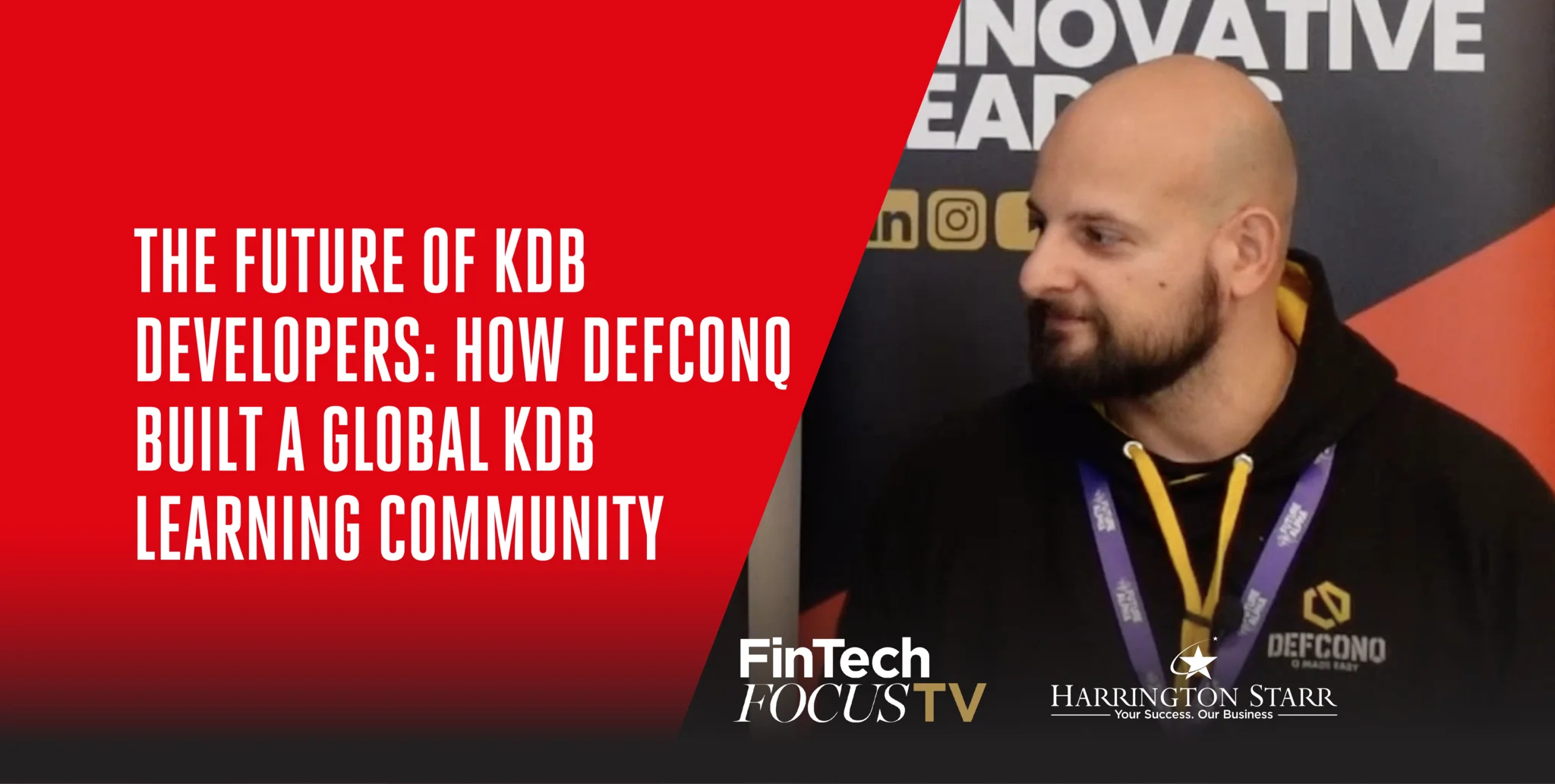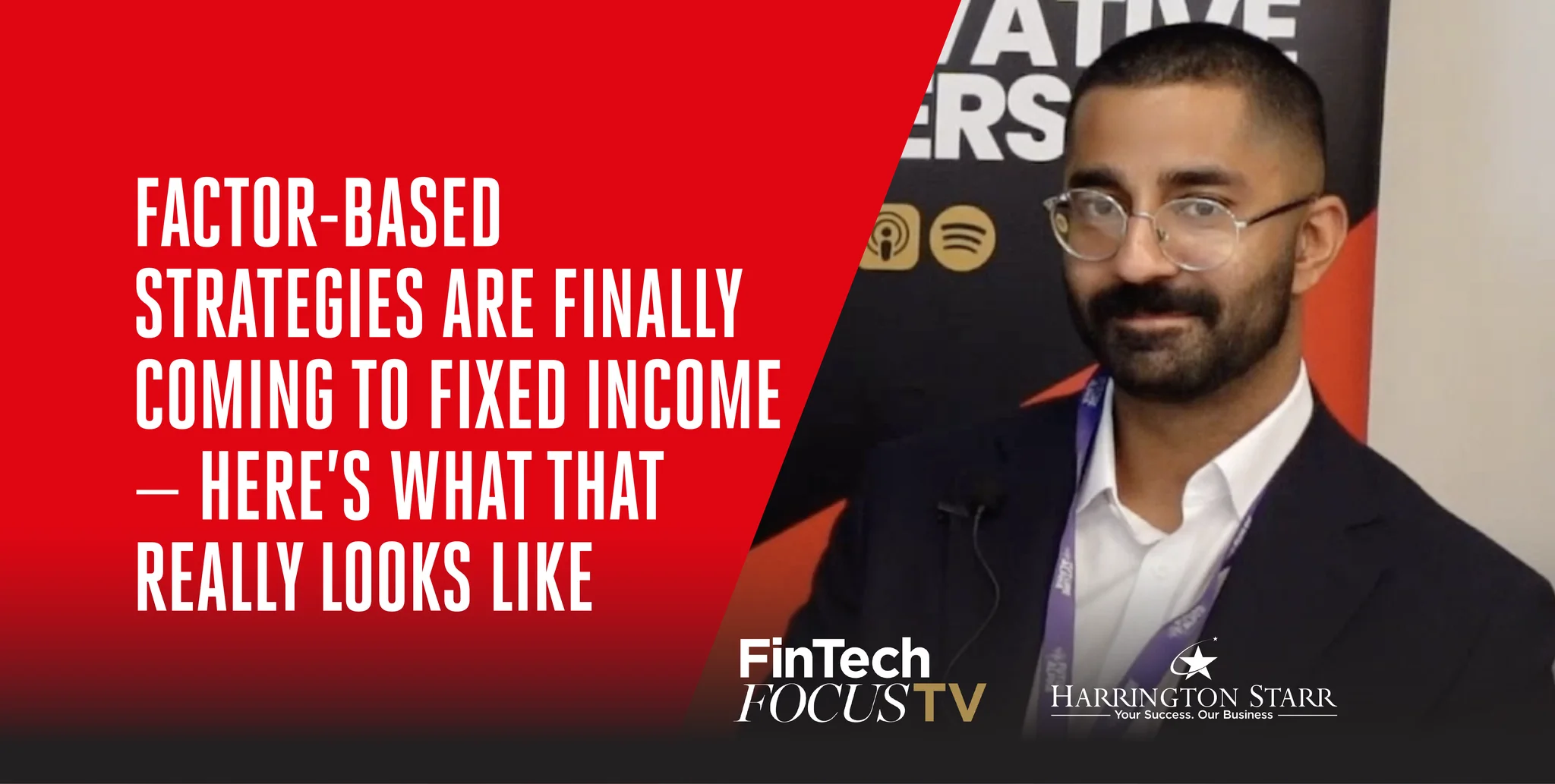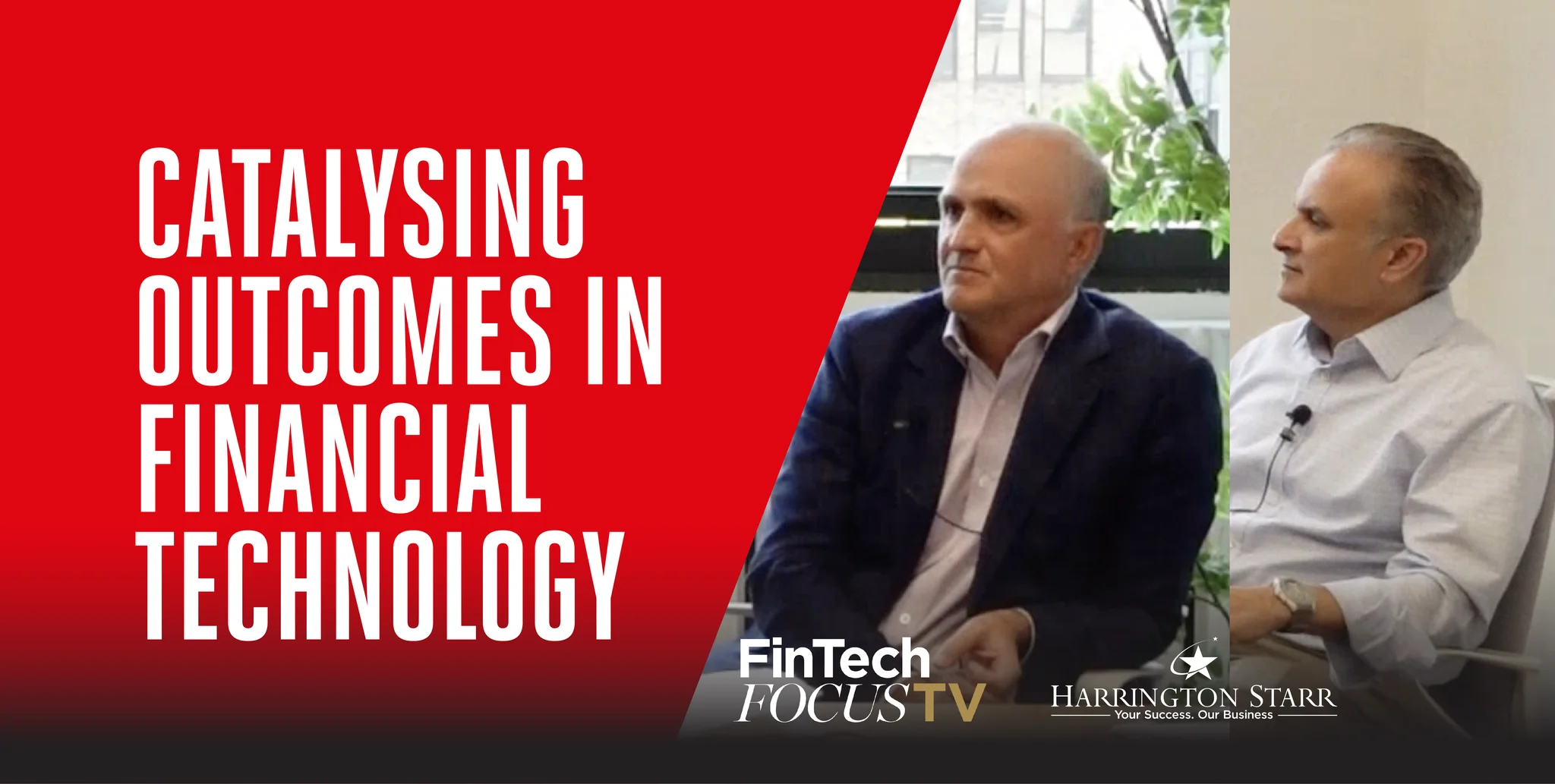Why you MUST lean into AI in Capital Markets Today
Artificial Intelligence is no longer just a buzzword in financial services, it's transforming how trading firms operate, how markets evolve, and how talent is sourced across capital markets. In a re-run of one of the most compelling panel discussions to feature on FinTech Focus TV 'Why you MUST Lean into AI in Capital Markets Today, Toby, convenes a powerhouse of voices to explore how AI is driving monumental change across the industry.
Joining him at Vintners Place in London are four visionaries shaping the AI conversation: Rebecca Healey, Freelance Consultant and market structure expert; Daniel Shepherd, CEO at BTON Financial; Paul Brennan, Chief Strategy Officer at Imandra; and Andy Simpson, CEO at SIGMA AI. Together, they dive deep into AI’s current and future impact on FinTech jobs, workflows, technology ecosystems, and business strategy.
This blog captures the key insights from their conversation, offering an essential roadmap for FinTech firms, recruitment professionals, and job seekers alike.
The Speed of AI Evolution: From Hype to Use Case
As the episode opens, Toby reflects on a recent New York event hosted by Daniel Shepherd, where this panel first convened to explore AI in capital markets. Since then, the conversation has already evolved. Rebecca Healey highlights how quickly the industry has moved from simply trying to define what AI is to actively exploring how it can address tangible business problems.
There is now a shift from conceptual discussion to implementation. Rebecca observes that firms are increasingly seeking out practical applications for AI, focusing less on what the technology is and more on what it can do. In a field as complex and competitive as financial services, that change in approach is critical. The FinTech recruitment landscape mirrors this shift: hiring managers are seeking candidates who understand not just data science or engineering, but the application of AI in solving real-world trading and operational challenges.
For recruitment agencies like Harrington Starr, it’s an inflection point. Understanding the use cases for AI helps identify which skillsets are most in demand, where talent gaps lie, and how to support both clients and candidates in navigating this transition.
Collaboration, Not Competition: A Cultural Shift in FinTech
A key theme that emerges from the panel is collaboration. Andy Simpson and Daniel Shepherd discuss how collaboration has become essential—particularly for start-ups and scale-ups aiming to compete with Tier One financial institutions. Rather than viewing one another as rivals, these firms are forming alliances, sharing knowledge, and referring business opportunities.
Daniel notes that his company, BTON Financial, used its US launch as a springboard to bring together peers for meaningful dialogue. AI thrives in ecosystems that support data sharing and interoperability, and the current wave of FinTech innovation demands similar openness. Rebecca adds that this culture shift is also gaining traction among regulators. She references a recent SEC webinar that stressed the need for more information-sharing across the industry—a notable departure from the traditionally secretive nature of financial services.
For FinTech recruitment, this collaborative mindset is changing what hiring looks like. Businesses increasingly value professionals who can work cross-functionally, think laterally, and operate in environments that blend innovation with compliance. The ability to communicate and collaborate across diverse teams is fast becoming a differentiator in the race for top talent.
Cracking the Tier One Market: The Role of Distribution Deals
Historically, selling into Tier One financial institutions has been a monumental challenge for smaller vendors. Complex procurement processes, strict compliance protocols, and rigid preferred supplier lists often excluded innovative technologies by default. But this is changing.
Andy highlights the power of distribution deals. Instead of trying to secure direct contracts, smaller firms are partnering with vendors already embedded within Tier One institutions. These established firms then deliver the new technologies via their existing frameworks, helping reduce procurement friction. Daniel agrees, pointing out that API-first companies can integrate seamlessly into legacy systems like OMS and EMS platforms, effectively plugging into the existing infrastructure without disrupting it.
Paul adds that cloud-based app marketplaces from hyperscalers are further reducing friction, creating plug-and-play environments that improve the customer experience and speed up time to market. This trend is creating a new wave of recruitment demand. FinTech firms are increasingly looking for talent that understands integration, distribution, and cloud ecosystems—roles that barely existed five years ago.
For Harrington Starr, it signals a need to recruit specialists who can bridge the gap between product innovation and enterprise delivery.
Transforming Financial Workflows: From Execution to Strategy
The conversation turns towards how AI is reshaping not just execution, but entire workflows. Rebecca points out that whereas previous technologies in financial services often focused narrowly on automating execution, modern AI applications have much broader scope. From idea generation and routing through to post-trade analysis, AI is enabling smarter decisions and delivering real-time insights.
FTC3, an interoperability protocol few had heard of a year ago, is now becoming a standard part of infrastructure conversations. Rebecca shares that she is conducting research into “connectivity in the age of AI,” uncovering how firms are using technology not just as a support function but as a strategic weapon.
Andy offers an example from SIGMA AI—a TCA chatbot that allows traders to interact dynamically with their transaction data. Rather than relying on static dashboards, users can query the chatbot in natural language and get meaningful, contextual responses. This not only speeds up decision-making but allows information to be accessed anywhere—even in the back of a taxi en route to a client meeting.
These innovations are creating new types of FinTech jobs. Product managers who understand trading workflows, engineers who can build conversational interfaces, and analysts who can interpret AI-generated insights are now in demand. Harrington Starr’s recruitment strategy continues to evolve alongside these developments, ensuring clients have access to the right talent to build and deploy such solutions.
The Rise of Agentic AI in Financial Markets
Paul Brennan shifts the focus to what he calls the “practical phase” of AI—the move from hype to value generation. According to Paul, the most exciting development in AI today is agentic AI: systems that can independently decide, act, and improve based on a defined goal.
These agents are already being used in finance to enhance tasks like transaction cost analysis, trade routing, and best execution. They offer a level of dynamism that fixed rules engines never could. Rebecca adds that this technology shifts trading from a static, historical process to a forward-looking, adaptive system—bringing about a new kind of intelligence that evolves alongside the market.
Andy, meanwhile, offers a view into the architecture required to build such systems. His team uses vector-based ranking and neural networks to assess relevance and sentiment in real time. These tools allow trading firms to sift through enormous volumes of unstructured data, providing a strategic edge that manual processes simply cannot match.
These developments have profound implications for the FinTech recruitment market. Firms now need candidates who can build, train, monitor and govern autonomous systems. This includes AI operations specialists, ethical AI officers, and even prompt engineers—roles that did not exist two years ago but are now becoming essential.
Productivity, AI and the Human-in-the-Loop Model
There’s a compelling discussion on the impact of AI on productivity. Toby raises a valid concern: if AI merely makes work easier without raising output, are we squandering its potential? Andy counters that enhancing productivity—even without increasing output—could be a win for an industry under immense pressure. The rise of 24/7 trading means staff are under constant strain, and AI can help manage that burden.
Rebecca is quick to remind the panel that AI won’t eliminate jobs, just as algorithmic trading didn’t empty out trading floors. Instead, it creates new roles and redistributes responsibilities. Andy agrees, noting that younger professionals are already fluent in using tools like ChatGPT and Claude Haiku. The next generation of workers will expect AI to be part of their everyday toolkit.
Importantly, the panel agrees on one principle: the human must stay in the loop. From regulatory compliance to strategic oversight, human judgement remains irreplaceable. Andy and Paul discuss techniques like neuro-symbolic AI and agent guardrails to ensure systems remain transparent, auditable, and aligned with business objectives.
FinTech recruiters must now seek out hybrid talent—people who understand both technology and regulation, automation and governance. At Harrington Starr, this hybrid skillset is one of the top priorities for 2025 hiring plans.
Regulation, Risk and the Safe Experimentation Model
As the discussion winds down, the panel reflects on the balance between innovation and risk management. Rebecca notes that regulators are moving faster than ever, but firms must also create their own frameworks for safe experimentation. AI adoption need not be an all-or-nothing decision. Small-scale trials, pilots, and phased rollouts can help firms test value before committing to full-scale deployments.
Daniel adds that BTON Financial reduces client risk by acting as a lightweight, API-first layer—plugging into existing systems without disrupting them. Andy points out that the industry is not inherently risk-averse, but it is cautious about unquantified risk. That’s why it’s vital to embed AI systems with safeguards that ensure transparency and accountability.
Paul closes the conversation with a final point on long-term planning. Businesses that treat AI as a short-term trend will be left behind. Those that plan for its permanent presence—building strategy, skills, and infrastructure around it—will be the winners.
Final Thoughts: What This Means for FinTech Recruitment
This episode of FinTech Focus TV is more than just a conversation—it’s a blueprint for the future of capital markets and a guide for how recruitment must evolve. For Harrington Starr, the takeaways are clear:
- AI is no longer theoretical. It’s operational, practical, and reshaping job descriptions today.
- FinTech firms need hybrid professionals who blend market knowledge, technical fluency, and collaborative mindset.
- Safe experimentation, distribution partnerships, and human-in-the-loop design are essential to AI adoption.
- FinTech jobs of the future will demand expertise in agentic systems, API integration, and ethical AI governance.
Whether you’re a hiring manager, jobseeker, or technology leader, this panel offers invaluable insight into the transformation underway. AI in capital markets is no longer a future vision—it’s here, and it’s rewriting the rules.






